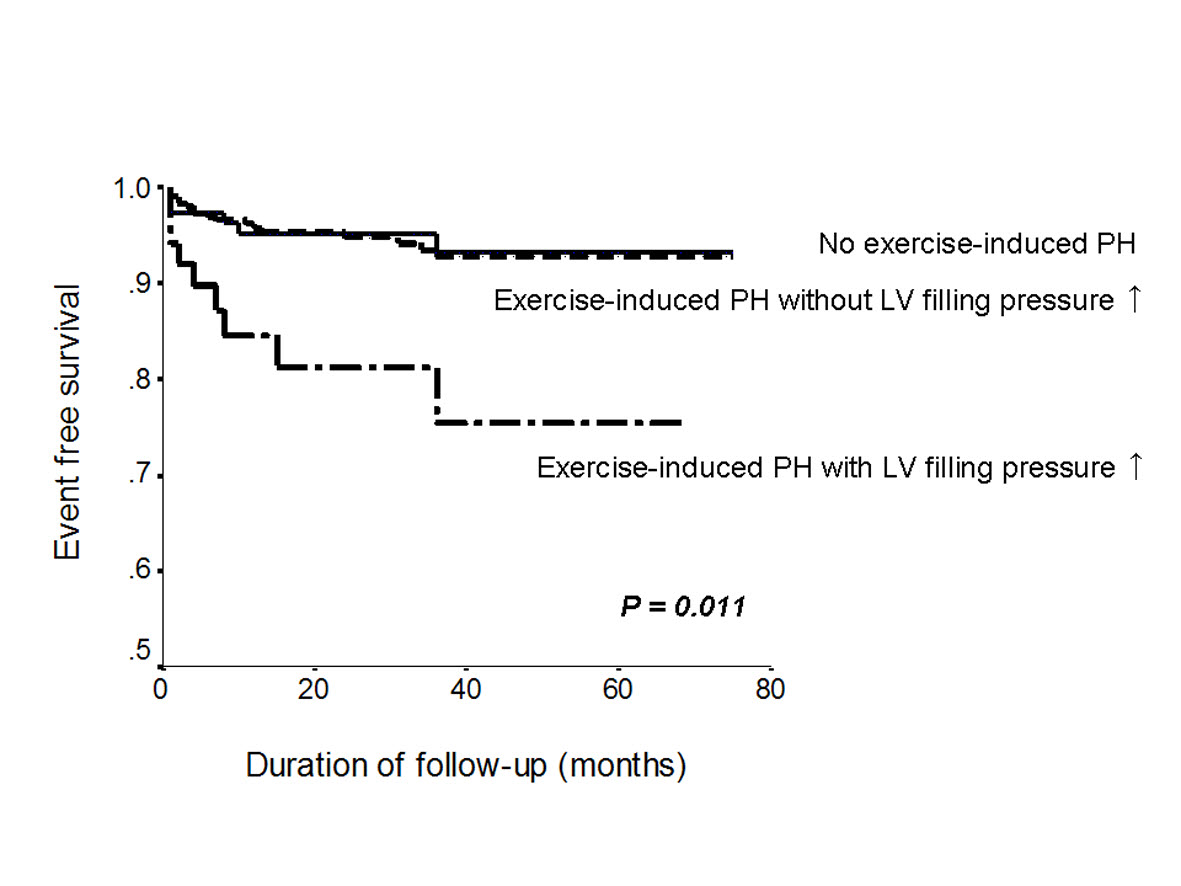| єя«•«ьљƒ : ±Єњђ
|
ЅҐЉцєш»£ - 530656 69 |
| Clinical Outcome of Exercise-Induced Pulmonary Hypertension in Patients with Preserved Left Ventricular Ejection Fraction: Implication of an Increase in Left Ventricular Filling Pressure during Exercise |
| мЧ∞мДЄлМАнХЩкµР мЛђмЮ•лВік≥Љ |
| мЛђмІАмШБ, кєАмД±мХ†, л∞ХмД±нХШ, мµЬлПЩнЫИ, мЦСмЪ∞мЭЄ, м°∞мЭЄм†Х, кєАмІДлѓЄ, лђЄмД†нХШ, мЭінШДмІД, мµЬмЭШмШБ, м†ХлВ®мЛЭ, нХШмҐЕмЫР |
Background Exercise-induced pulmonary hypertension (EIPH) is common even in subjects with preserved left ventricular (LV) ejection fraction and an increase in left ventricular filling pressure (LVFP) is considered as an important contributor of EIPH. However, clinical outcome of EIPH is unknown in subjects with preserved LV ejection fraction. We hypothesized that EIPH would predict clinical outcome and which associated with increased LVFP would show poorer outcome.
Methods and Results Of 1,347 consecutive subjects who were referred for diastolic stress echocardiography, 523 subjects (58 ¬± 11 years, 211 males) comprised study population after excluding patients with LV systolic dysfunction, cardiomyopathies, end-stage renal disease and patients whose tricuspid regurgitation velocity or E/EвАЩ could not be measured either at rest or during exercise. EIPH was defined as present if pulmonary arterial systolic pressureвЙ•50 mmHg and an increase in LVFP during exercise was if E/EвАЩвЙ•15 at 50W of exercise. Subjects were followed for a median of 32 months. The end-point was a composite of major cardiovascular events and any cause of deaths. Patients with EIPH related with increased LVFP showed poorer outcome than those with normal LVFP or patients without EIPH (p = 0.0011 by log-rank test). The independent predictor of adverse events using a Cox proportional hazards regression analysis was E/EвАЩ at 50W (p<0.001, HR 1.16, 95% CI 1.08-1.24) in patients with EIPH.
Conclusion In patients with preserved LV ejection fraction, EIPH provides prognostic information. An increase in LVFP during exercise is an independent predictor of adverse outcomes in patients with EIPH.
|
|
|
Warning: getimagesize(/home/virtual/circulationadmin/renewal/econgress/conference/abstract/img_files/survivalcurve.jpg) [function.getimagesize]: failed to open stream: No such file or directory in /home/virtual/circulationadmin/new/econgress/conference/manage/schedule/view_abstract.php on line 164

|
|





